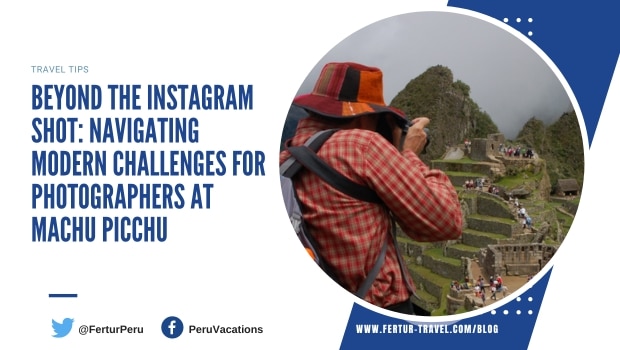
Machu Picchu Photography: Best Circuit for Stunning Photos
Machu Picchu’s ancient stone citadel and breathtaking vistas have been immortalized by countless photographers, yet there’s always a new angle for stunning Machu Picchu photos waiting to be discovered. Here’s a guide.
The ancient Inca citadel’s breathtaking panoramic views, intricate Inca architecture, and mystical atmosphere make it a dream destination for capturing stunning images.
This comprehensive guide explores the best Machu Picchu routes to photograph this UNESCO World Heritage site, helping travelers document their journey and create lasting memories of this extraordinary archaeological wonder.
Planning Your Machu Picchu Photo Shoot

Machu Picchu stands as a timeless testament to Inca ingenuity, offering photographers an unparalleled canvas to capture its enigmatic beauty.
Capturing stunning photos of Machu Picchu frankly does not require as much careful planning as one might think. As noted in Ruth M. Wright’s classic The Machu Picchu Guidebook: A Self-Guided Tour, “Machu Picchu is a mecca for photographers — many say a bad picture cannot be taken there.”
However, today’s photographers face several key limitations that didn’t exist when Wright first published her guidebook more than 20 years ago:
Back then, photographers at Machu Picchu enjoyed a level of freedom and flexibility that seems almost unimaginable today. Visitors then could roam freely for hours throughout the site, with fewer crowds, allowing for unhurried composition and the luxury of waiting for perfect lighting conditions.
The reality for photographers at Machu Picchu today is quite different:
- Time Constraints: Current-day visitors face strict time limits. The site now operates on a shift system, typically allowing only 4-hour visits. This means photographers must be more strategic, prioritizing their shot list and working efficiently.
- Crowd Management: With the renewed post-pandemic explosion of tourism, managing crowds has become a significant challenge. Popular vantage points like the Watchman’s Hut often have a line of people waiting for their few moments to get their shot. During high season (June 1 to October 15), it can be extremely difficult to capture unobstructed views or spend extended time setting up.
- Restricted Areas: In an effort to preserve the site, many areas that were once accessible are now off-limits or can only be viewed from designated paths. This limits the angles and perspectives available to photographers.
- Equipment Restrictions: Today’s visitors face limitations on the photography equipment they can bring. Tripods, for instance, are prohibited without special permission, challenging photographers who rely on them for stability in low-light conditions or longer exposures.
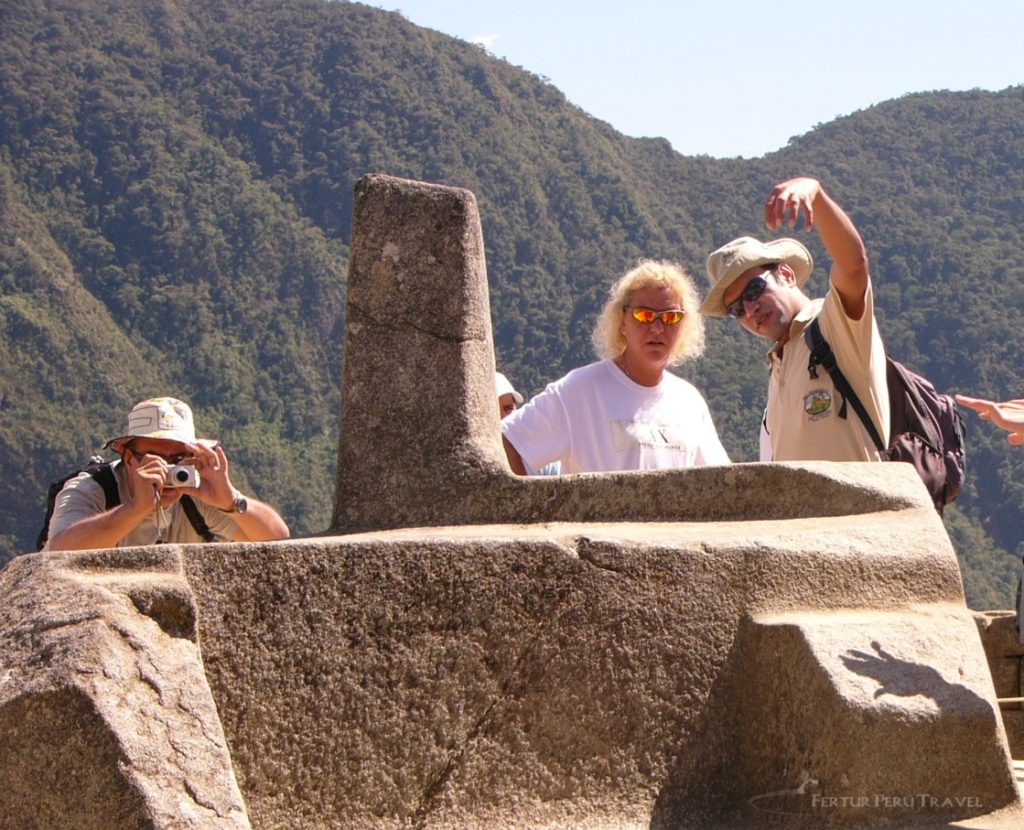
Research Prep for Great Machu Picchu Photos
Ruth Wright’s guide book remains an invaluable source for navigating Machu Picchu’s photo opportunities. You should also to draw inspiration from the many great Machu Picchu photographers of the past. Explore their different technical and artistic approaches. For instance:
- Martin Chambi catapulted the site’s rediscovery in the early 20th century, while at the same time helping to create a neo-Inca aesthetic that would underpin Peru’s Indigenismo movement. Today his pictures are the stuff of genuine nostalgia.
- Edward Ranney‘s poetic B&W photographs used natural light to emphasize the site’s mystical qualities. The Inca wanted the stone structures to make you feel like they ondulated in harmony with the forces of the surrounding mountains. Ranney captures the grain and texture of that movement.
- Jim Bartle‘s work expresses an intimate connection with the natural landscapes. Spend some time really looking at Jim Bartle’s photos. He helps you understand why the Inca venerated the mountains — and then suddenly you find, you’re venerating the mountains yourself.
- Walter Wust orchestrated one of the most magical Machu Picchu photo sessions ever recorded: a hot air balloon majestically hovering high above the Vilcanota, in juxtaposition with Huayna Picchu. The images helped put Machu Picchu on the map for the 21st century.
Avoid the Common Pitfalls: Photographing Machu Picchu Without Falling Into the Tourist Trap
In today’s age of Social Media, there’s been a shift at Machu Picchu to visual homogenization, with countless visitors striving to recreate the same iconic shots they’ve seen online.
While this trend has its merits in democratizing photography and allowing more people to share their experiences, it comes at the expense of more contemplative or unique perspectives.
The quest for the perfect selfie or the most recognizable vista overshadow the subtle details and hidden corners that make Machu Picchu truly extraordinary. Try to resist the undeniable pressure to capture instantly shareable, “Instagram-worthy” images.
Elevating Your Machu Picchu Photographs
Time is limited. If you’re not busy replicating those cliché images, then you can find ways to capture the enigmatic beauty of Machu Picchu in fresh and compelling perspectives.
Your photography will stand out by seeking less conventional viewpoints and spending time to truly observe and connect with the site.
Amazing photographs are still very achievable if you take into account the following factors:
Timing Your Visit
Timing is crucial for capturing the best Machu Picchu photos.
Machu Picchu has a new circuit system implemented under Régulo Franco Jordán, the recently appointed director of the Machu Picchu Archaeological Park. With some advance planning, visitors can book multiple routes within a single full-day visit.
Choosing the Right Circuit
Circuit 2 is widely regarded as the single best Machu Picchu circuit for photography enthusiasts. This route offers a comprehensive overview of the site, including the famous viewpoint on the upper terraces and access to the Guard House. The circuit continues along the Upper Ruins before proceeding to the Sacred Rock at the northern end of the citadel.
For those seeking an even more complete experience, the Circuit 2 + the Intipunku Sun Gate option is recommended. This combination allows visitors to explore additional areas of the ancient citadel, providing more diverse photo opportunities.
While Circuit 2 misses a few spots included in Circuits 3, it still covers the most important and sacred sights at Machu Picchu. Importantly, it includes the famous Machu Picchu viewpoint on the upper terraces, which is absent from Circuit 3.
Ideal Timing for Photography
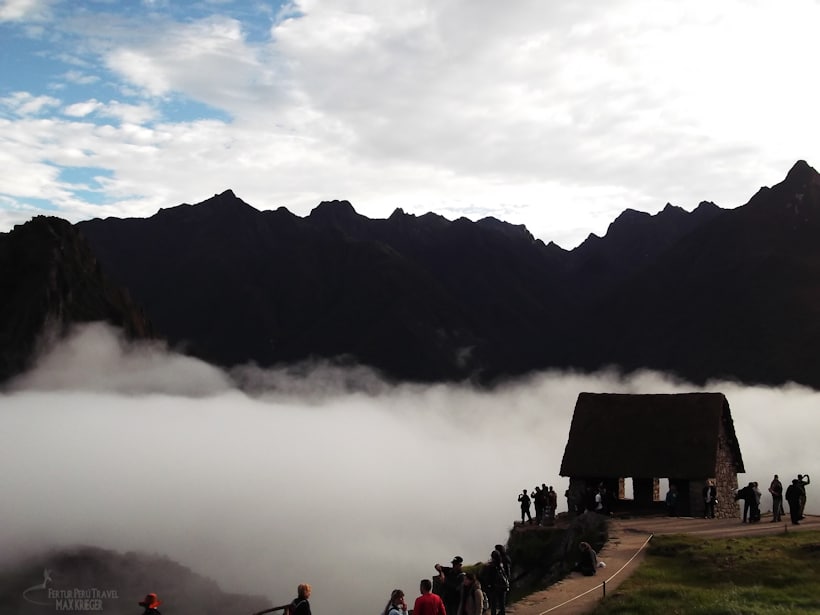
Early Morning (6 AM – 8 AM):
- The gates open at 6 AM, and the early morning light is soft and diffused, casting gentle shadows that enhance the texture of the stone ruins.
- Early morning visits also mean fewer crowds, allowing for unobstructed shots. The cool, serene atmosphere of dawn at Machu Picchu creates a tranquil setting for capturing the citadel as it emerges from the morning mist.
Late Afternoon (3 PM – 5 PM):
- As the sun lowers in the sky, Machu Picchu is bathed in a warm, golden light that adds depth and richness to photos.
- By late afternoon, the crowds have thinned out, and the light becomes more dynamic, offering opportunities for dramatic shots. This is an ideal time to capture the sun casting long, evocative shadows across the site.
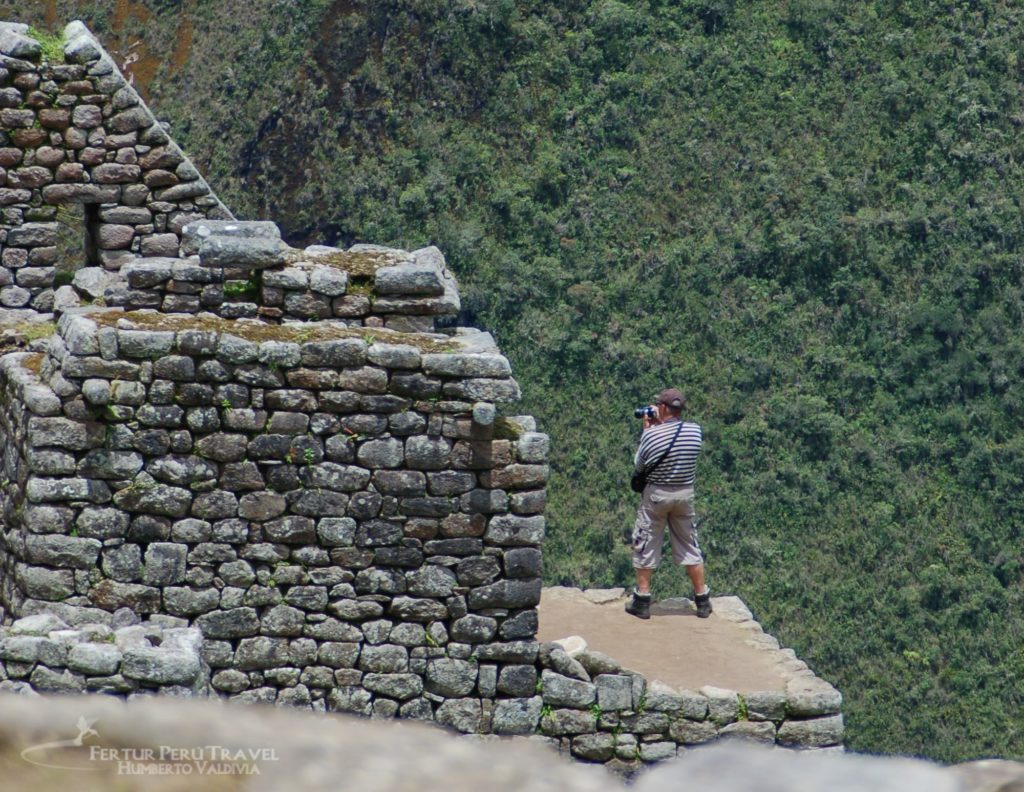
Essential Gear
When packing for a Machu Picchu photo shoot, it’s crucial to balance quality equipment with practicality, given the site’s regulations and physical demands.
- Camera: A compact, point-and-shoot camera or GoPro is ideal for Machu Picchu, where space is limited.
- Lenses: A wide-angle lens is essential for capturing the expansive views and intricate details of the ruins. This is particularly important for cameras with crop sensors.
- Batteries and Storage: Pack spare camera batteries and a portable power bank. Don’t forget extra SD cards to ensure ample storage space.
- Weather Protection: Bring a waterproof camera bag or a rainproof cover for your backpack to protect your equipment from unexpected weather changes.
- Avoid Bulky Equipment (They’re not going to let you enter with it anyway): Leave behind unnecessary extra lenses, filters, and additional camera bodies. Tripods and drones are prohibited at the site.
Remember, the key to successful Machu Picchu photography lies as much in adaptability as preparation. By choosing the right circuit, timing your visit strategically, and packing essential, lightweight gear, photographers can capture the awe-inspiring beauty of this ancient Inca citadel while respecting its regulations and preserving its integrity.
Iconic Photo Spots in Machu Picchu
Machu Picchu offers a plethora of breathtaking vantage points for photographers to capture the essence of this ancient Inca citadel. From classic panoramic views to unique perspectives, these iconic photo spots allow visitors to document their journey and create lasting memories of this extraordinary archeological wonder.
The Inca’s deliberate efforts to align their structures in geometric harmony with the landscape and surrounding mountains are evident at every turn.
As Wright noted, “The natural features not only satisfied their aesthetic sense but also held great religious significance and fit into the Inca worldview.”
The most famous and enigmatic example of this incredible Inca design at Machu Picchu is the Sacred Rock, silhouetted by Yanantin Mountain in the distance.
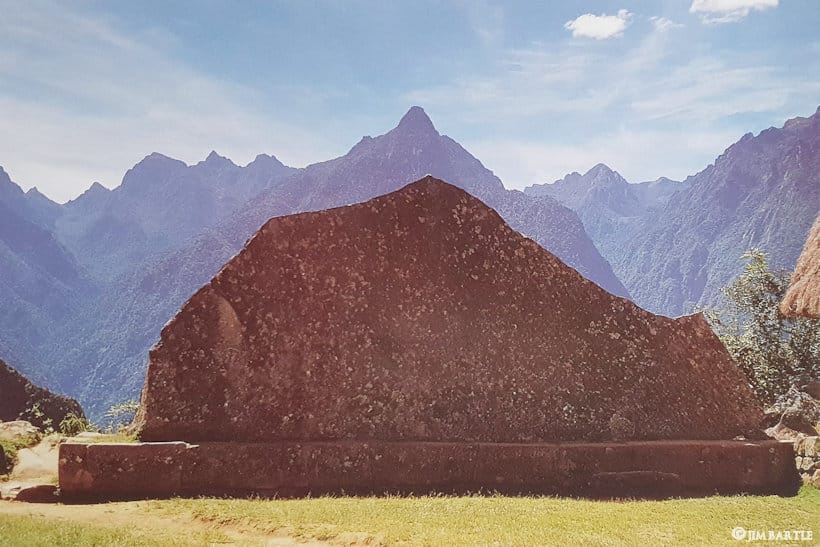
The Watchman’s Hut
The Watchman’s Hut, also known as the Guard House, is undoubtedly the most famous and sought-after photo spot in Machu Picchu. Located in the upper part of the archeological site, it offers a complete view of the Inca city and has become the classic photo opportunity shared on social networks.
The Guard House sector offers an unparalleled panoramic view that truly captures the poetic architecture of Machu Picchu. As Chilean poet Pablo Neruda described it in his classic poem ‘Heights of Machu Picchu’: ‘High city of laddered stone, finally resident of what is earthly.’ This vantage point allows photographers to showcase the ancient city perfectly perched between two craggy mountain peaks, embodying Neruda’s vivid imagery.
To reach this vantage point, visitors must climb a set of stone steps from the entrance gate. This ascent can be challenging, especially for older adults. While a young person might complete the climb in about 10 minutes, older visitors may need 30 minutes or more.
The effort is well worth it for the panoramic view of the entire archeological site. Visitors gather here, often spending 10 to 30 minutes waiting their turn to set up and find the perfect angle for their dream picture of Machu Picchu.
For the best lighting conditions, photographers should aim to visit in the afternoon. Around 4 PM, the evening sun bathes the Inca citadel in a warm glow, creating ideal illumination for stunning photographs. Additionally, the site tends to be less crowded in the afternoon, making it easier to capture unobstructed views.
It’s important to note that weather conditions can significantly impact photography at this location. Machu Picchu is known as the “city in the clouds,” and fog or rain can obscure the view. The rainiest months are January, February, and March. If faced with cloudy conditions, patience is key — waiting for a brief clearing can result in a spectacular shot.
Intipunku (Sun Gate)
Intipunku, or the Sun Gate, offers another iconic perspective of Machu Picchu. This spot has become particularly popular among hikers culminating their trek of the Inca Trail. For those seeking a memorable experience, arriving at the Sun Gate for sunrise can be truly magical.
As you descend, you’ll encounter ever-changing views of the ancient city nestled among the mountains. These vantage points often yield some of the most captivating images, allowing photographers to document the gradual reveal of Machu Picchu — a visual story of discovery reminiscent of Hiram Bingham’s first sighting more than a century ago.
The Sacred Plaza
The Sacred Plaza, located in the heart of Machu Picchu, offers a unique perspective on the site’s intricate architecture and religious significance. This area includes some of the most important structures in the citadel, such as the Temple of the Three Windows and the Principal Temple.
From the Sacred Plaza, photographers can capture close-up shots of the impressive stonework and architectural details that make Machu Picchu so remarkable. The interplay of light and shadow on the ancient walls throughout the day creates ever-changing scenes, perfect for those seeking to document the site’s mystical atmosphere.
To enhance the photography experience at Machu Picchu, consider booking a personal guided tour. Guides are familiar with the best photo spots and can offer valuable insights into the history and significance of each location. Their expertise can help visitors capture not just beautiful images, but also the stories behind them.
Huayna Picchu
Rising dramatically above Machu Picchu, Huayna Picchu offers photographers some of the best opportunities to capture both the natural grandeur of the sanctuary and its remarkable Inca engineering.
The earliest entrance times are coveted by photographers for good reason — they offers the most dramatic lighting conditions and fewer fellow climbers to navigate around. The photographic gifts reveal themselves gradually.
As you wind up the first switchbacks, Machu Picchu’s western sector unfolds below, its agricultural terraces catching the early morning light. Mist rises from the Urubamba River valley, adding an ethereal quality to every frame.
The early hours, from dawn until about 9:00 AM, offer dramatic side-lighting that emphasizes the texture of the stonework, while the mist in the valley below slowly dissipates.
The Temple Sector, reached about forty minutes into the ascent, showcases some of the finest examples of Inca stonework. The Temple of the Moon, with its cave entrance, is another great photo opportunity.
By mid-morning, the light becomes clearer and more direct, perfect for capturing distant mountain views and architectural details with maximum clarity.
Make sure to secure your gear. The near-vertical stone stairways are challenging. Be prepared to suppress vertigo when you peer down.
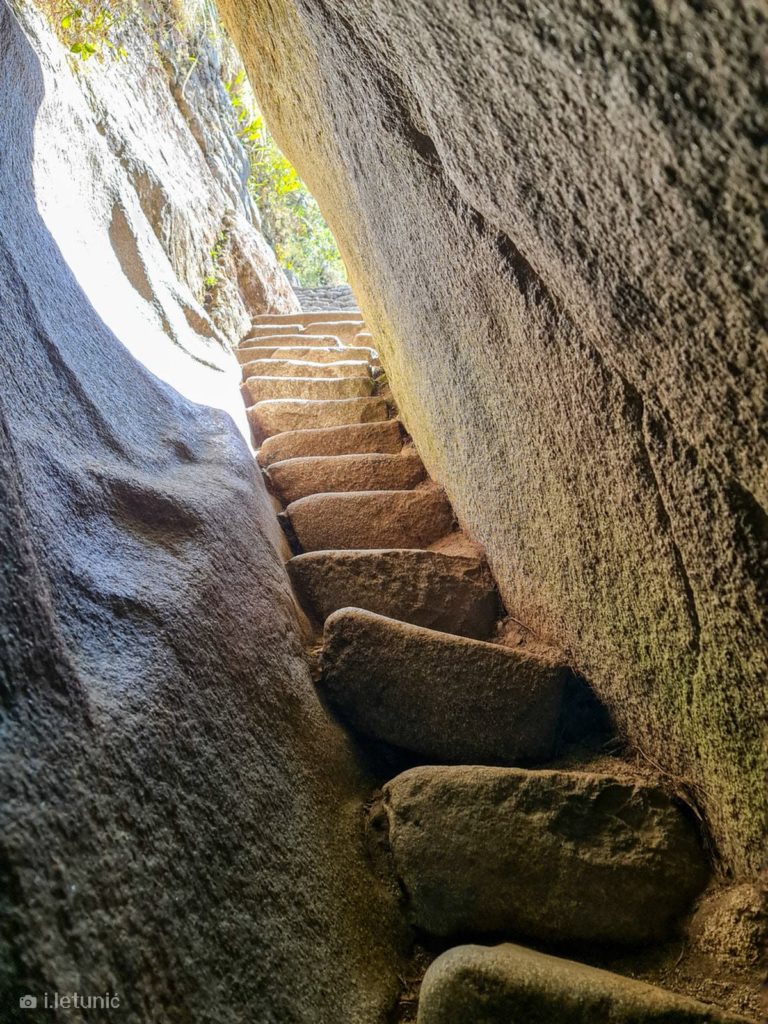
Huchuy Picchu
For photographers seeking unique angles of Machu Picchu away from the crowds, Huchuy Picchu offers an exceptional vantage point that’s often overlooked by tourists. This lesser-visited peak, also known as Uña Picchu, provides spectacular birds-eye views of the northern Urban Sector, with the Intiwatana and Unfinished Temple being particularly prominent in compositions.
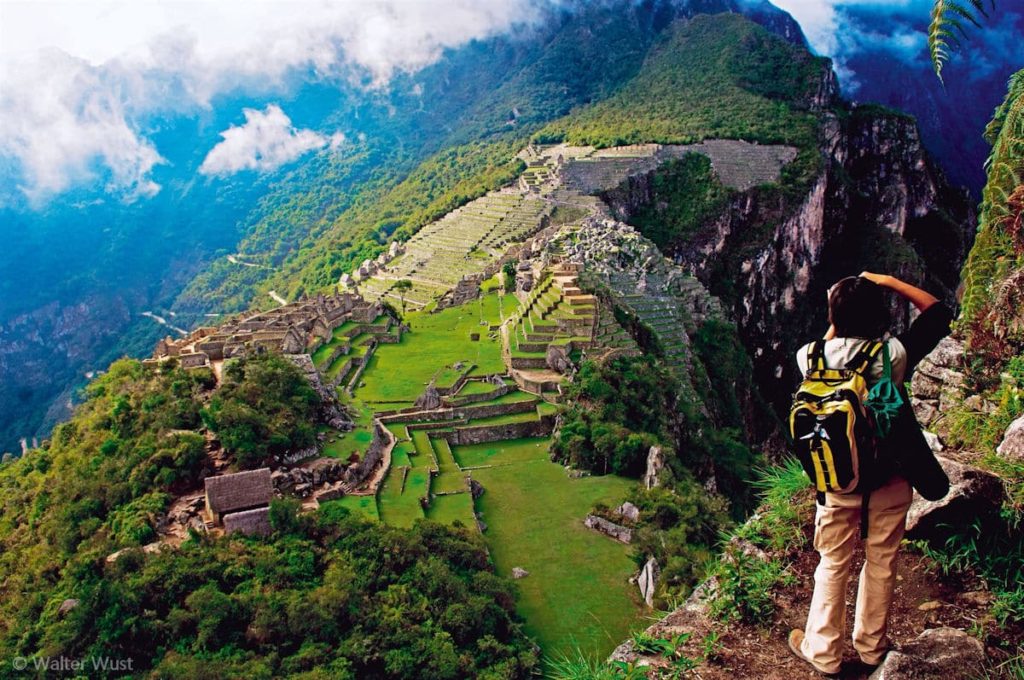
Important Note: The trail to Huchuy Picchu is part of Route 3-D within Circuit 3 (Machupicchu Realeza) and is currently only accessible during “high season” entry periods. Please check current access dates before planning your visit.
Capturing Machu Picchu’s Wildlife
Machu Picchu is not only a marvel of ancient architecture but also a haven for diverse wildlife. The Inca citadel and its surrounding sanctuary are home to an impressive array of animal and plant species, offering photographers unique opportunities to capture the natural beauty alongside the archeological wonders.
Llamas and Alpacas
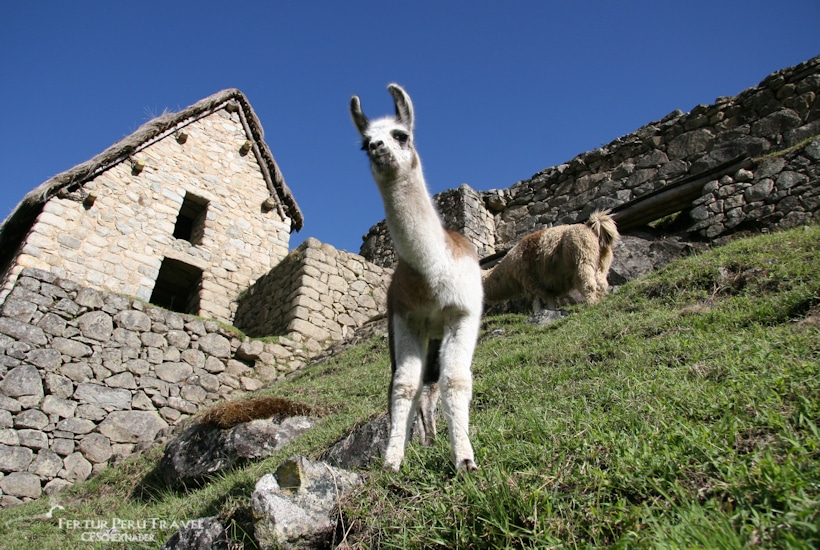
Visitors to Machu Picchu are often greeted by the sight of llamas and alpacas grazing on the terraces of the citadel. These iconic South American camelids have been an integral part of Andean culture for thousands of years. Llamas, known scientifically as Lama glama, were domesticated in Peru 4,000 to 5,000 years ago and played a crucial role in the construction of Machu Picchu by carrying heavy loads across steep terrains.
Llamas are easily recognizable by their long, thin necks and thick fur, which ranges from dark beige to white, with reddish-brown and white or yellow spots being the most common pattern. They stand approximately 1.7 to 1.8 meters tall and weigh between 130 to 200 kilograms. Their cousins, the alpacas, are smaller, measuring 81 to 99 centimeters in height and weighing 48 to 84 kilograms.
These animals are not just historical remnants but serve a practical purpose in maintaining the site. Their grazing helps keep the grass trimmed, preserving the landscape’s appearance. When photographing these animals, it’s important to respect their space and remember that they may spit if they feel threatened or annoyed.
Native Birds
The Machu Picchu Historical Sanctuary is a birdwatcher’s paradise, with nearly 420 different bird species recorded within its 37,000 hectares. While the Inca city itself may not offer many bird sightings, the surrounding areas and hiking routes like the Inca Trail provide excellent opportunities for bird observation and photography.
One of the most sought-after birds is the Andean Cock-of-the-rock (Rupicola peruviana), Peru’s national bird, known for its vibrant red plumage and distinctive appearance. The Black-and-chestnut Eagle (Spizaetus isidori) is another impressive species inhabiting the sanctuary, along with the majestic Andean Condor (Vultur gryphus), which can sometimes be spotted soaring above the ruins.
Other notable species include the Masked Fruiteater (Pipreola pulchra), an endemic bird of the Andes, and the Green-and-white Hummingbird (Elliotomyia viridicauda), which is endemic to the Andean regions of Peru. Colorful tanagers, such as the Blue-and-yellow Tanager (Thraupis bonariensis) and the Scarlet-bellied Mountain Tanager (Anisognathus igniventris), add splashes of color to the landscape.
For the best bird photography opportunities, visitors should aim to be at key locations like the Sun Gate or along the Inca Trail at sunrise during the dry season. While tripods are prohibited within the Inca city, binoculars can be helpful for locating birds and preparing for the perfect shot.
Andean Flora
The unique climate and geography of the Machu Picchu region have created an environment rich in plant life. The sanctuary boasts around 2,354 documented plant species, including a stunning variety of orchids, begonias, and trees.
One of the most remarkable aspects of Machu Picchu’s flora is the presence of close to 400 species of orchids within the historic sanctuary. Some of these species have only recently been discovered by specialists, making them particularly exciting subjects for nature photographers.
As visitors descend through different altitudes, they encounter a changing landscape of plant life. The Inca Trail, in particular, offers a diverse range of flora due to its varying elevations and microclimates. Photographers may encounter unique species such as the yellow cone-shaped flowers of Vochysia peruviana, the pink flowering Oreocallis grandiflora, and the deep red Bomarea.
Passionate plant enthusiasts might also spot the rose pink variety of Passionflower (Passiflora pinnatistipula), locally known as ‘Poro Poro’, or the deep indigo flowering Brachyotum grisebachii. The wild form of nasturtium, Tropaeolum polyphyllum, with its vibrant yellow blooms, is another photogenic species found along the trails.
Creative Composition Techniques
Capturing the essence of Machu Picchu requires more than just pointing and shooting. By employing creative composition techniques, photographers can elevate their images and truly showcase the beauty of the ancient Inca citadel. Here are some key strategies to enhance your Machu Picchu photos:
Leading Lines
To create visually compelling images, photographers can use the natural and man-made elements of Machu Picchu to guide the viewer’s eye through the frame. The terraced landscapes of the site offer excellent opportunities for this technique. By using a wide-angle lens, photographers can capture the terraces as curved leading lines, drawing the eye into the image and even providing a glimpse of the Urubamba River in the distance below. These leading lines not only add depth to the photograph but also highlight the incredible engineering feat of the Inca civilization.
Rule of Thirds
The rule of thirds is a fundamental principle in photography that can significantly improve the balance and visual interest of an image. Imagine a tic-tac-toe grid superimposed on your frame, dividing it into equal thirds both horizontally and vertically. This technique suggests placing key elements of your composition along these lines or at their intersections.
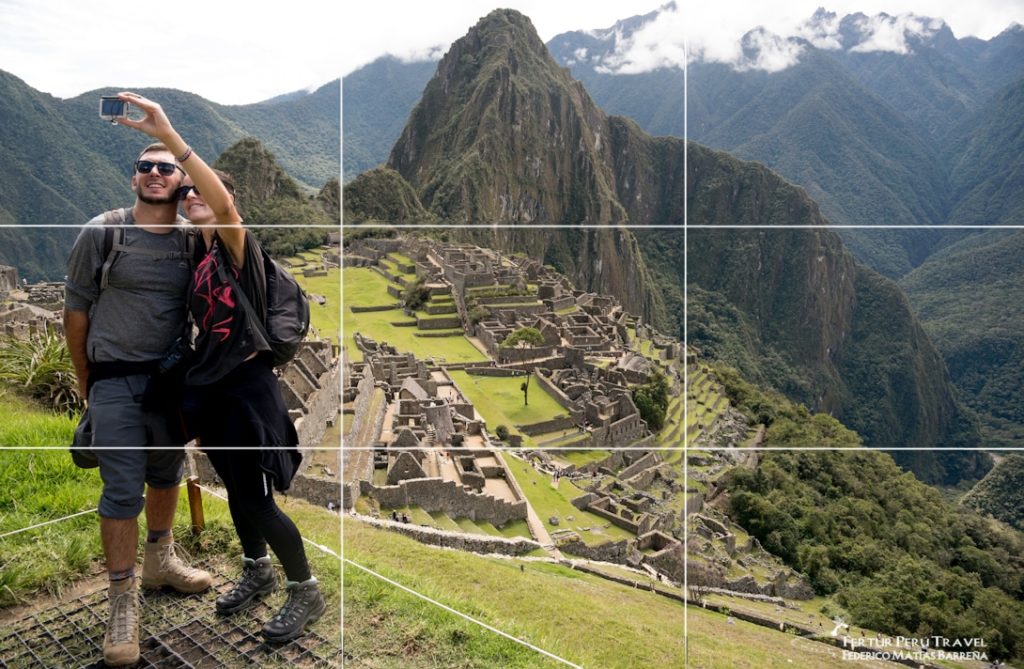
When photographing Machu Picchu’s landscapes, consider placing the horizon along one of the horizontal lines. If you want to emphasize the sky, position the horizon along the bottom line. Conversely, to showcase more of the ruins, place the horizon along the top line. For subjects of interest, such as a particular building or a llama, try positioning them at one of the four intersection points of the grid.
Many modern cameras, including DSLRs and even smartphones, offer the option to display a rule of thirds grid on the LCD screen or viewfinder. This feature can be particularly helpful for beginners and even experienced photographers when composing shots. If you’re unsure how to enable this feature, consult your camera’s manual.
While it’s best to frame your shot correctly in-camera, keep in mind that most post-processing applications offer tools to crop and re-frame your images to adhere to the rule of thirds if needed.
Framing with Nature
Machu Picchu’s stunning natural surroundings provide ample opportunities to frame your shots creatively. One effective technique is to use colorful foliage in the foreground to frame your subject. This can add depth and context to your images, drawing the viewer’s eye to the main subject while showcasing the lush environment.
Another creative approach is to use the ruins themselves as framing elements. Try shooting through windows or doorways in the ancient structures to spotlight the intricate stonework.
Inca carefully integrated Machu Picchu’s architecture with its breathtaking natural surroundings. Key features were breathtakingly through these stone apertures by the Inca, like the Temple of the Three Windows overlooking the Great Plaza, and the Main Gate frames a view of Huayna Picchu mountain.
To achieve this effect, use a lower aperture (f/3 or lower) to create a framing blur while keeping the subject sharp.
By incorporating these creative composition techniques – leading lines, the rule of thirds, and framing with nature – photographers can capture stunning images that do justice to the awe-inspiring beauty of Machu Picchu. Remember, while staging and props are prohibited, there’s still ample room for creativity within the site’s guidelines. Use the natural features, architecture, and wildlife to craft compelling visual stories of this extraordinary archeological wonder.
Post-Processing Tips for Machu Picchu Photos
Capturing stunning photos of Machu Picchu is just the first step. Post-processing can elevate your images, bringing out the true essence of this ancient Inca citadel. Here are some essential tips to enhance your Machu Picchu photographs:
Enhancing Colors
To make your Machu Picchu photos truly stand out, focus on enhancing the natural colors of the landscape. Start with a base edit in Lightroom or your preferred editing software. Adjust the highlights, shadows, whites, and blacks to create a balanced foundation. Then, fine-tune the colors to bring out the vibrancy of the scene.
- Adjust the vibrance and saturation carefully to avoid over-processing.
- Modify the green tones to deepen them slightly, enhancing the lush vegetation.
- Tweak the blue hues towards aqua to create a more striking sky.
- Adjust the yellows to complement the greens, maintaining a natural balance.
For grass and foliage, use a brush tool to selectively enhance areas that need more vibrancy. Pick a color from the existing grass and apply it with a low opacity brush (around 10%) to maintain a natural look.
Balancing Exposure
Machu Picchu’s unique location often results in challenging lighting conditions. Balancing the exposure in post-processing is crucial to create a well-balanced image.
- Start by adjusting the overall exposure, paying particular attention to the main subjects.
- Reduce highlights to prevent overexposure in bright areas, especially the sky.
- Lift the shadows to reveal details in darker areas without losing contrast.
- Use graduated filters to balance the exposure between the sky and the foreground.
If you’re working with a particularly bright sky, consider using a graduated neutral density filter during shooting. In post-processing, you can mimic this effect by applying a graduated filter to darken the sky while maintaining proper exposure in the foreground.
Adding Atmosphere
Machu Picchu’s location in the high jungle often results in misty, atmospheric conditions. Use this to your advantage in post-processing to create moody and artistic photos.
- Embrace the fog and mist in your images. Instead of trying to remove it, enhance it to add a sense of mystery and drama.
- Use the dehaze tool carefully to maintain the atmospheric effect while improving clarity where needed.
- Adjust the tone curve to enhance the misty look, particularly in the shadows and midtones.
- Consider adding a subtle vignette to draw the viewer’s eye to the center of the image.
For a more advanced technique, use the brush tool to selectively darken areas of the image, creating a manual vignette effect. This can help direct the viewer’s eye to key elements like the staircase or ruins.
Remember, the goal of post-processing is to enhance your images while maintaining their authenticity. Avoid over-processing, which can lead to unnatural-looking results. Instead, aim for subtle adjustments that bring out the best in your Machu Picchu photos.
Lastly, consider the time of day when processing your images. Photos taken during the golden hours (early morning or late afternoon) often require less adjustment, as the natural light is already warm and flattering. For midday shots, you may need to work more on balancing the harsh contrast and bringing out details in the shadows.
By applying these post-processing tips, you can transform your Machu Picchu photos into stunning visual memories that capture the true essence of this remarkable UNESCO World Heritage site.
Conclusion
The journey through Machu Picchu’s ancient ruins offers photographers a chance to capture the essence of this awe-inspiring Inca citadel. From planning the perfect visit to mastering creative composition techniques, every step contributes to creating stunning visual memories. The interplay of architecture, nature, and history provides endless opportunities for unique and captivating images.
By applying thoughtful post-processing techniques, photographers can enhance their Machu Picchu photos, bringing out the true beauty of the site while maintaining its authenticity. Whether it’s balancing tricky lighting conditions or adding a touch of atmosphere, these final touches help to convey the magic and mystery of this remarkable UNESCO World Heritage site. In the end, the photos serve not just as personal mementos, but as a way to document the wonder of Machu Picchu, if not for the world, for posterity.
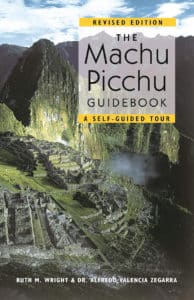
 TIPS FOR THE “FERTUR PERU TRAVELER” #101 & #102 :
TIPS FOR THE “FERTUR PERU TRAVELER” #101 & #102 :  10 Essential Travel Apps For Your Peru Vacation
10 Essential Travel Apps For Your Peru Vacation 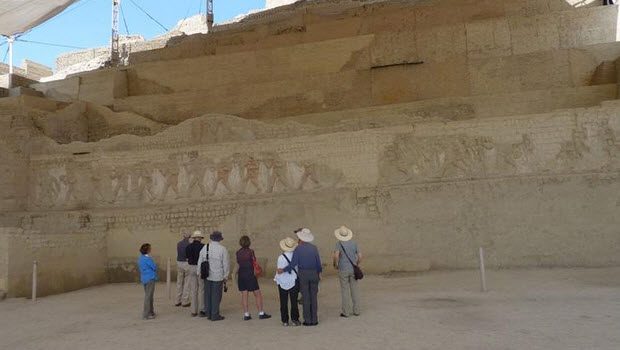 When the rains come early to Cusco, consider the Moche Trail alternative
When the rains come early to Cusco, consider the Moche Trail alternative  Peru Holidays – The Best Time to Visit 2024
Peru Holidays – The Best Time to Visit 2024 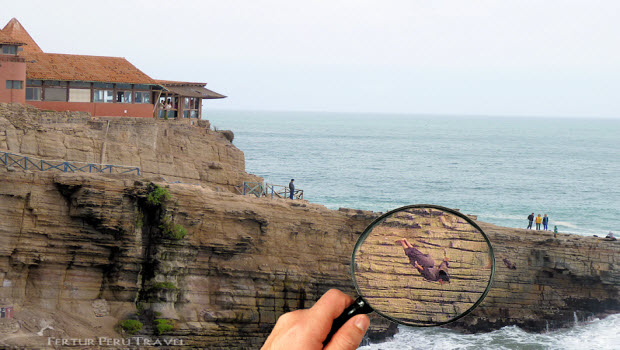 Lima’s legendary leaping monk saves drowning man
Lima’s legendary leaping monk saves drowning man  A Traveler’s Guide to Tipping in Peru
A Traveler’s Guide to Tipping in Peru 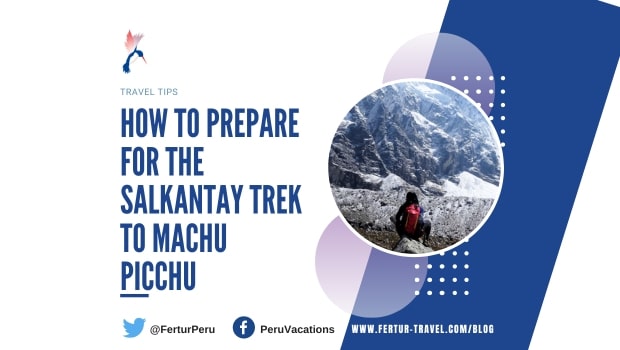 How to Prepare for the Salkantay Trek to Machu Picchu
How to Prepare for the Salkantay Trek to Machu Picchu 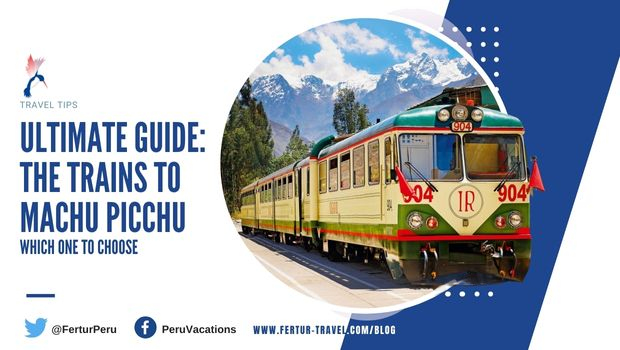 Choose The Right Train To Machu Picchu: A Complete Guide
Choose The Right Train To Machu Picchu: A Complete Guide